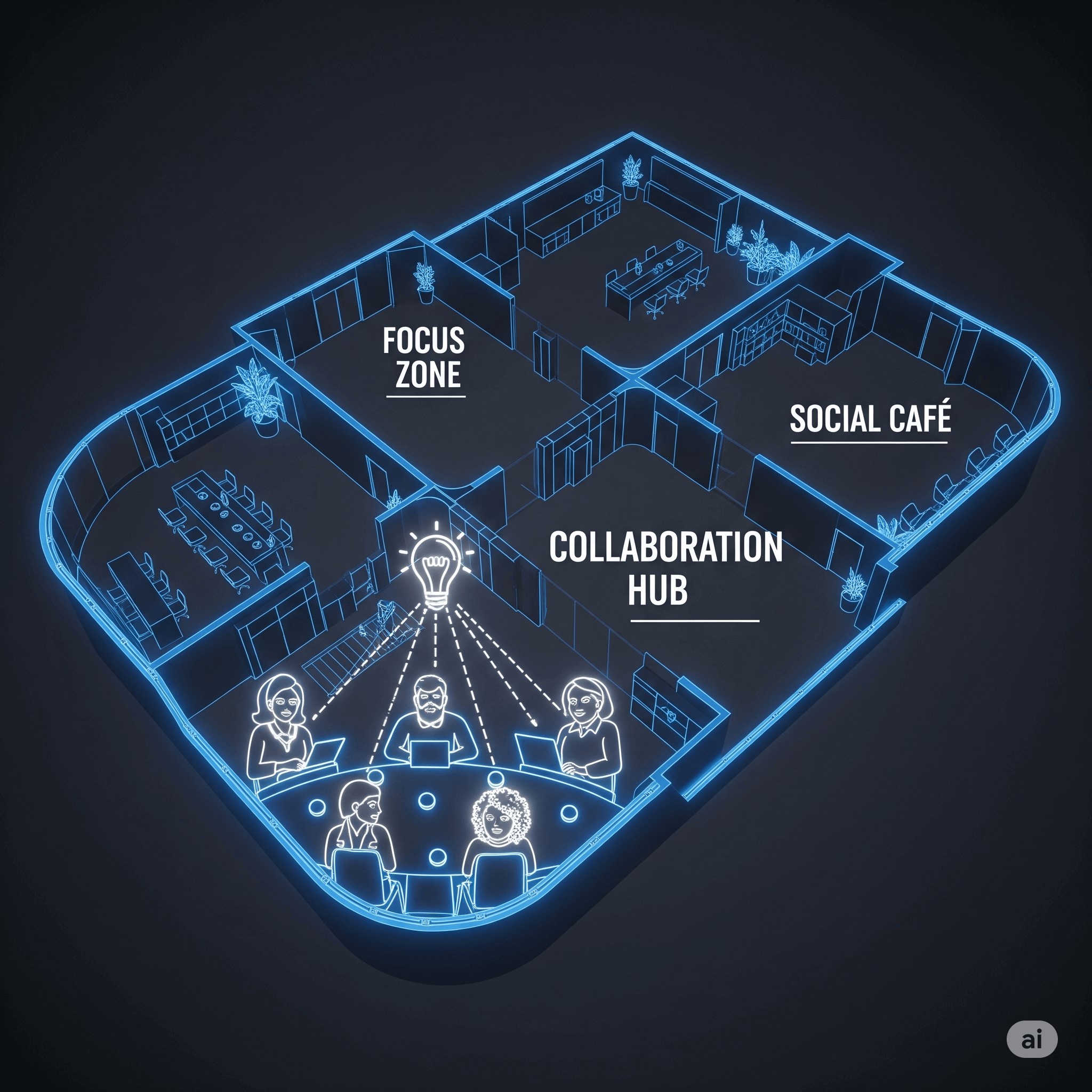In the hybrid era of 2025, the question is no longer if employees should come to the office, but why. If the commute is to be worth it, the destination must offer something that a home office cannot. The traditional office is dead; in its place rises the collaboration hub.

Navigating the Shift: Return-to-Office Mandates and Hybrid Work Trends
From Cubicle Farm to Creative Hub
The purpose of the physical office has fundamentally shifted. It’s no longer a container for individual task-work, but a dynamic stage for high-value, in-person interaction. With U.S. office vacancy rates hovering near 20% (and exceeding 25% in tech hubs like Austin), businesses and landlords are radically rethinking space.
The trend is clear: companies are trading massive, fixed-lease footprints for smaller, more flexible “home bases” designed for monthly or quarterly onsite meetings focused on innovation. This is often supplemented with on-demand coworking passes—a strategy that has fueled a 25% year-over-year growth in coworking inventory.
Designing the Office of the Future
What does a successful collaboration hub look like for a digital production team?
Zoned for Different Work Modes
The office is designed with distinct zones:
- “Library” spaces for quiet focus
- Open-plan areas with digital whiteboards for brainstorming
- Comfortable lounge areas for informal discussions
Tech-Enabled and Seamless
Every meeting space is equipped with high-fidelity video conferencing and collaboration tools, ensuring remote team members are fully integrated—not just a face on a screen.
Flexible and Adaptable
Furniture is modular and easily reconfigurable. A space that hosts a client demonstration in the morning can be transformed for a team-building exercise in the afternoon.
A Magnet for Culture
The office becomes a cultural anchor—a place for celebrating wins, hosting industry events, and fostering the spontaneous interactions that build strong team bonds.
Conclusion
The goal is to create an environment so compelling and purpose-built for collaboration that employees want to be there. By designing an office that complements the autonomy of remote work with the synergistic energy of in-person connection, you can make the commute not just necessary, but truly worthwhile.
